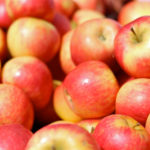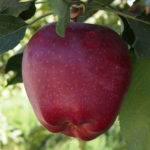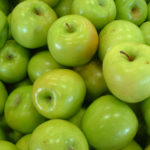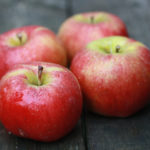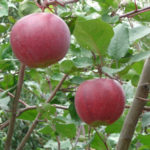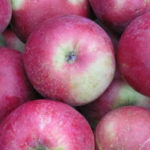Apple variety Banana
Winter varieties of apple trees are considered one of the most common and demanded ones, because they have a long shelf life and are the most affordable source of living vitamins, starting from the middle of winter. Among the varieties with a late ripening period in Russian gardens, representatives of the Belarusian selection are well-deserved. One of them is the Banana variety (due to its elegant yellow color, not its taste). The variety is not new, it was obtained at the Belarusian Research Institute of Potato and Fruit Growing by crossing Babushkino and Winter Banana apple trees (foreign selection, at that time was considered a standard variety for cultivation in the Georgian SSR), which was carried out in 1936. Authors: A. E Syubarov and E.P. Syubarov. The seedling number 31 / 11−3 was selected to the elite in 1956. In 1969 it was zoned in the following regions of Belarus: Brest, Vitebsk, Gomel, Grodno, Minsk, Mogilev. Originator of RUE "Institute of Fruit Growing" (Belarus). Recognized as suitable for home and industrial cultivation. Our hero is not included in the State Register of Breeding Achievements of Russia.
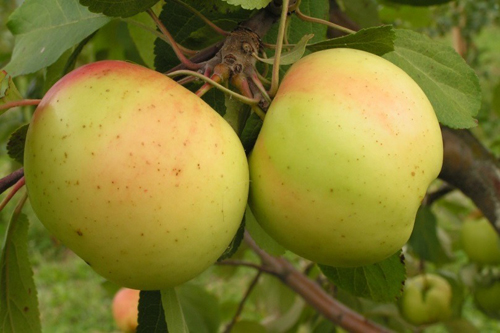
Description
Banana apple trees are medium or vigorous, with a rounded, slightly raised crown of medium density, on average they reach a height of 4.0 m. Adults that have entered the fruiting period of the plant change the shape of the crown, it becomes slightly spreading. Skeletal branches extend from the trunk at an acute angle of 40 degrees, but at the same time they grow together quite firmly with the trunk. Annual shoots are medium-thick, the top extends upward, the color of the bark is light chestnut. Lentils are light. Moderate leafiness. The leaves are green with a yellowish tinge, of medium size, oblong-elliptical in shape, with raised edges and slightly curved along the central vein, the tip is bent downward. The apex is weakly elongated, the base is rounded, the serration is bluntly double-serrate. The surface of the leaf blade is slightly wrinkled, matte. The petiole is long, thin, uncolored. Stipules are absent. Flowers are collected in inflorescences. The petals are white with pink veins. The type of fruiting is mixed, the yield is formed on fruit twigs, spears and ringlets.
Fruits are medium in size, non-uniform, weight can be from 90 to 110 g. Sometimes specimens weighing about 200 g ripen. The shape is flat-round, slightly flattened. The funnel is of medium width and depth, sometimes with traces of rusting. The saucer is not wide, the cup is often open, sometimes half-open. The skin is smooth and firm. The main color is greenish-yellow, the integumentary color appears on the sunny side in the form of a blurred light pink blush. During storage, the color becomes brighter - straw yellow in color. The subcutaneous points are light, not numerous. On the skin, closer to the saucer, there are dark small dots. The pulp is firm, crispy, yellowish-white, juicy. The aroma is pleasant, delicate. The taste is sweet and sour, estimated at 4.0 - 4.2 points, according to other sources - 4.6 points on a five-point system. Taste qualities are peculiar, belonging to the rented type, it is thanks to them that the culture is still in demand, despite the appearance of new species. 100 g of pulp contains (average): dry matter 15.6%, acids 0.83%, sugars 10.1%, ascorbic acid 11.1 mg. The ratio of sugar to acid is 12.2.
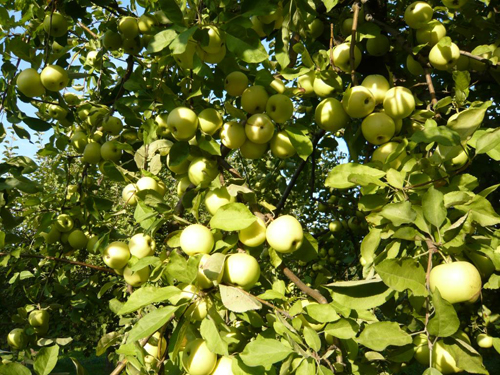
Characteristics
- The early maturity of the Banana apple tree is common. A tree on a seed stock, as a rule, begins to bear fruit from 5 to 6 years of age. On stock 62−396, the first harvest is formed already in the 3rd year;
- in terms of ripening, the variety belongs to the winter. Fruits ripen at the end of August, ripening occurs in the second decade of September. For the onset of consumer ripeness, apples need to mature until December;
- fruiting is regular, annual. But there is one "but". If the tree is constantly overloaded with harvest, without pruning, then in this stable process, periodicity will be outlined;
- productivity can be called moderate.Since the variety is not included in the State Register of the Russian Federation, it is difficult to talk about exact numbers. Various sources give the following indicators: the average yield per tree is 25 - 30 kg. In good years, the maximum yield is 60 kg. In industrial plantings - 17 t / ha;
- an undoubted plus is the firm attachment of the fruit to the branches. Even well-ripened apples do not crumble;
- over a rather long growing period, the culture showed high winter hardiness in the areas of tolerance, it is able to withstand temperatures of minus 25 ° C. For comparison, winter hardiness Pepin's saffron somewhat lower than that of our hero;
- immunity is not bad, again, given the age of the variety. In normal years, the plant is able to resist scab. But in wet years, there is insufficient resistance to this disease, both leaves and fruits may suffer. Has resistance to pests;
- the crop is able to withstand the hardships of transportation, marketable and consumer qualities do not suffer;
- keeping quality is excellent. The fruits do not lose their taste and marketability until June, of course, provided that storage standards are observed;
- the crop is suitable for universal use. First of all, apples are consumed in their natural form. But they can also be processed into everyone's favorite apple jam, jam, cook compote or jam, make a filling for baking.
Pollinators
Occurring information indicates that Banana is a self-fertile variety. Therefore, in a pair with our hero, you need to plant apple varieties that bloom with him at the same time.
Planting and leaving
Planting the Banana apple tree can be done in the fall (this period is preferable) or in the spring. The culture works best on loose and nutritious loams. Agricultural technology is common for culture, but there are some nuances. Thickening tendencies will require annual thinning pruning. Watering is moderate, but in the heat, moisture is required. To maintain resistance to fungal diseases, preventive treatment should be carried out.
Apple-tree Bananovoe is a worthy representative of the Belarusian selection, respected by Russian gardeners. Despite the fact that our hero has a long history, many of his qualities remain relevant to this day. First of all, it is good winter hardiness, transportability and universal use of fruits. The yield, however, is average, but with the correct formation of the crown and the rationing of the ovary, this indicator will be stable annually. But there are also drawbacks that complicate the care of the culture somewhat. For example, a tree requires obligatory thinning pruning; without it, there may be periodicity in fruiting, and the fruits will be small. In addition, there is evidence that the bark of the trunk may suffer from sunburn, so an annual spring whitewashing is required. Currently, the variety is rarely used in industrial cultivation, since it was replaced by new, more resistant and productive apple trees with an even longer shelf life. But, despite this, in private gardens, our hero is found quite often, because his unusual taste is not inferior to modern varieties.
